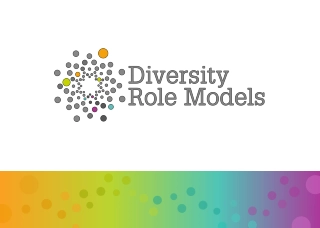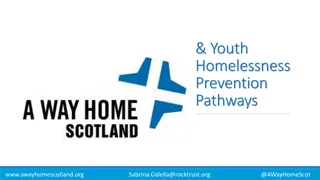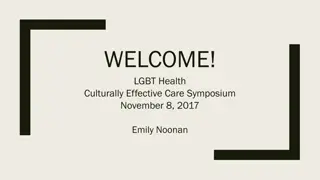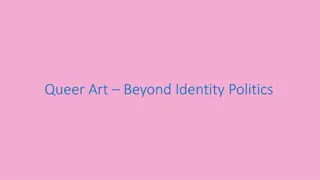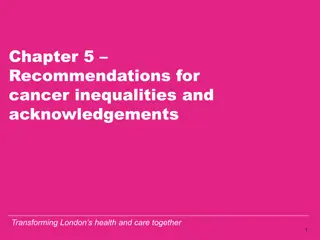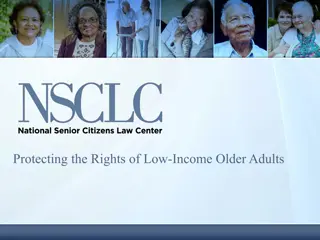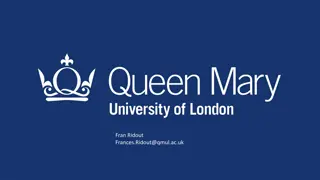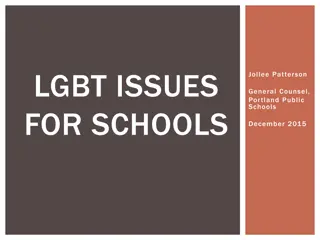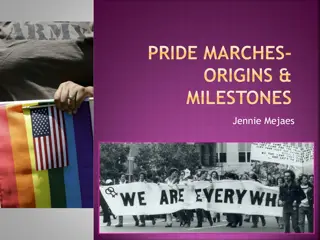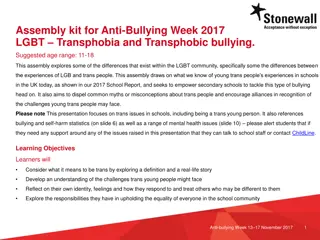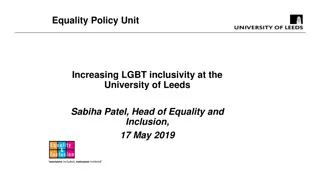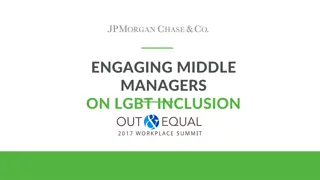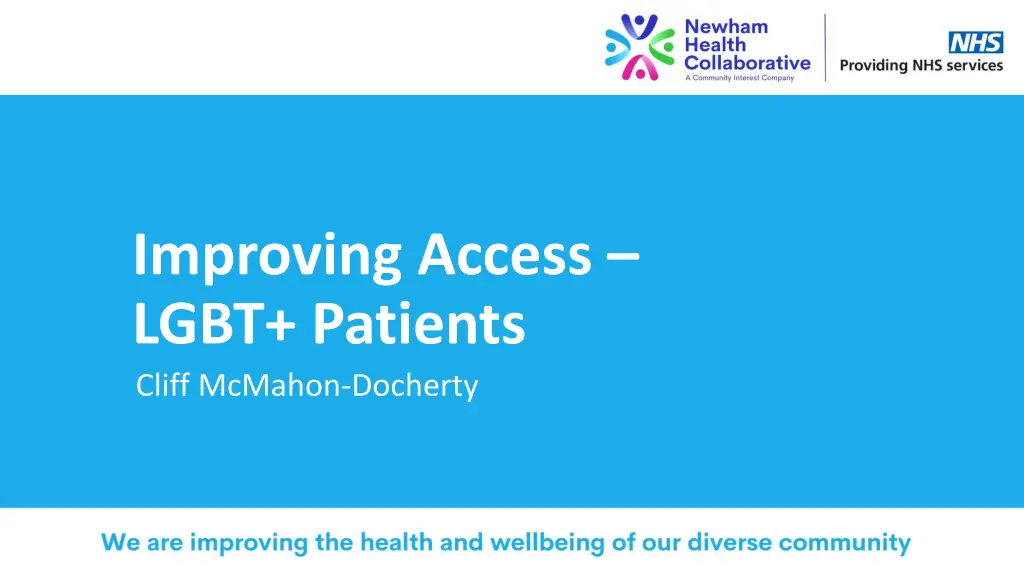
Understanding LGBTQ+ Healthcare Issues and Barriers
Explore the meaning of LGBTQ+ and gender identity, common healthcare challenges faced by the community, and a lived experience example shedding light on the complexities of LGBTQ+ healthcare.
Download Presentation

Please find below an Image/Link to download the presentation.
The content on the website is provided AS IS for your information and personal use only. It may not be sold, licensed, or shared on other websites without obtaining consent from the author. If you encounter any issues during the download, it is possible that the publisher has removed the file from their server.
You are allowed to download the files provided on this website for personal or commercial use, subject to the condition that they are used lawfully. All files are the property of their respective owners.
The content on the website is provided AS IS for your information and personal use only. It may not be sold, licensed, or shared on other websites without obtaining consent from the author.
E N D
Presentation Transcript
Improving Access LGBT+ Patients Cliff McMahon-Docherty
What Does LGBT+ Mean? The initials refer to Lesbian Gay Bisexual and Trans Some people prefer to use LGBTQIA+ as a more inclusive term with the additional letters referring to Queer or Questioning, Intersex and Asexual. A person's sexuality may be clear to them quite early on, or it may only become apparent later in life. According to the ONS in 2019 1.4 million people in the UK identified as lesbian, gay or bisexual (2.7% of the population). Roughly the same number declared that they did not know or did not answer the question.
What Does Gender Identity Mean? This refers to a person's sense of their own gender and may not be the sex they were registered at birth. The ONS asked about gender identity for the first time in the 2021 census. Why? To improve monitoring To support anti-discrimination duties under the equality act Support allocation of resources and policy development 0.5% (262,000 people) answered that their gender identity was different from the sex registered at birth. 6% did not answer the question, equal to about 2.9 million people.
Common Healthcare Issues and Barriers In addition to the day-to-day problems related to sexual health and wellbeing that are universal; some other specific issues arise: Ageing without children feelings of loss, unmet care needs, or sense of purpose may be an issue for some. Maintaining healthy relationships. Judgement and prejudice encountered from some healthcare and allied practitioners. Appropriate support and care planning. Inclusive end of life care. LGBT+ friendly nursing and care homes. For gay men, health issues arising from long term HIV treatment and for some, unexpected survival led to debt and similar issues.
Common Healthcare Issues and Barriers Needs assessments that take account of sexuality and gender issues, e.g. identity confusion in dementia patients may need to be considered. Data protection and consent, and who to contact. The legal next of kin can sometimes be a problematic pathway if there is family prejudice and the next of kin is a family member who has shunned the individual or may not be respectful of their wishes. Equality law and how it relates to healthcare. Capacity and making LGBT+ appropriate decisions.
A Lived Experienced Example A gay man shows the best and most challenging aspects of healthcare. In the summer of 2020 he was unfortunately seriously ill in hospital with an antibiotic resistant infection. This was at the height of the Covid-19 pandemic. Specialists were redeployed and because of this, critical diagnoses had been missed for several months despite the best efforts of the GP. He was admitted as a medical emergency, with surgery the same day to release pressure inside his skull caused by infection build up and it emerged there was very little time to achieve a turnaround of his condition, just 48 hours before lethal damage occurred so it was a worrying time for all concerned, especially as no visitors were permitted. He is married and his husband called for an update. His right to information as a married partner was questioned because he was a man, he was subjected to aggressive questioning and information was withheld. He was distraught. Because the infection had left the patient profoundly deaf it was doubly distressing because due to the mask mandate, he knew the patient would be struggling with communication. Therefore by not communicating with the husband patient care was directly impacted.
A Lived Experienced Example The patient was at risk of developing sepsis, bacterial meningitis, encephalitis and the destruction of the cranial nerve. The husband needed updates obviously. By this point the patient was very sick and not always able to send text-based messages and not always aware of what was happening because of communication challenges. When calling a second time the husband was misgendered, experiencing the twin indignity of being mistaken for a woman, as well as being subjected to misogyny and then shut down as not being a genuine next of kin again. When he protested the nurse became defensive which the caller understandably responded to negatively. The relationship between the husband and the hospital never recovered. It destroyed trust completely. It also affected care because the patient reported feeling unable to raise issues with the nursing team. He later said that he was wary when the nurse in question was on duty and became anxious in case his husband was badly treated again if he called.
A Lived Experienced Example By contrast, at his GP surgery this happens: Receptionists ask how his husband is if he needs to go in for any reason. The GP team have often seen them together to discuss health issues if there has been a view that they can support each other with their health goals. They've participated in a health research programme aimed at gay men which supports others to live well and safely, which benefits the wider community. Often the GP will check with either partner how the other person is doing as they're both older people now with all the minor ailments that go with being in your 50's and 60's, and in doing so the practice acknowledge the relationship. In other words, they're seen and they're accepted.
LGBT Access In East London elop : : holistic lesbian and gay centre Newham LGBTQ+ Youth Project (consortium.lgbt) https://www.newham-lgbt-seniors.org.uk And the oldest health related LGBT charity in London: Home Page - London Friend
How Can We Help In Primary Care? Be an ally: Come Out For LGBT: Becoming an active LGBT ally (stonewall.org.uk) We can use the pride flag colours in practices, for example on lanyards Ensure LGBT+ appropriate healthcare information is displayed in waiting areas Use pronouns to help with misgendering. People don't always recognise names from other cultures, so this helps with multicultural inclusion as well. We can review our practice policies and procedures so that they are LGBT+ inclusive. We can consider specialist inclusion training and sign up to Pride in Practice: LGBT Foundation - Pride In Practice
What Else Can We Do? Reassure patients of our commitment to equity and not just equality a personalised care approach and shared decision making is at the heart of how we work. Practice teams include many specialisms to address specific needs. In addition to the doctors and nurses at the practice we have teams working to provide support with mental health, healthy living and addressing the social needs which affect our health and wellbeing. Built around the individual's goals, these services take account of a patient's personal situation, including any factors arising from gender and/or sexuality.


